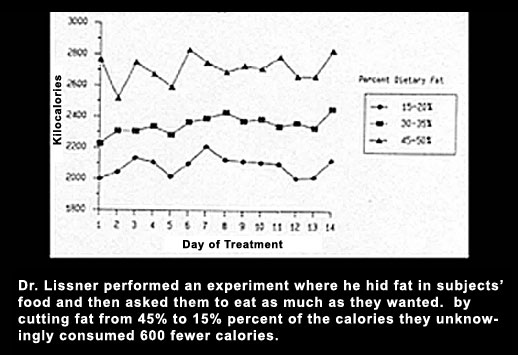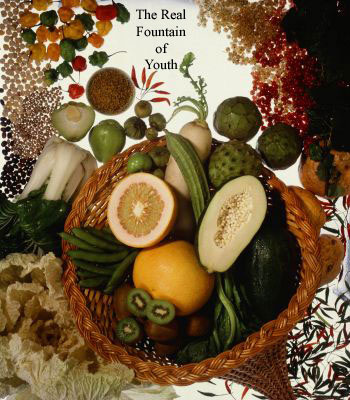|
Aging in Style
Maybe to 100 with sensible care
I love life so much that I would eat a
plateful of cardboard to spend another afternoon
windsurfing, another hour playing with my grandson Jaysen,
or another evening of pleasant conversation with my wife
Mary. About to enter my seventh decade of life, I can hardly
believe how young and healthy I feel. As long as I am
functional, comfortable, and content, I want to live to be
100.

Aging is a normal part of life—a
process that cannot be stopped or reversed; but
age-associated diseases can be prevented and our functional
lifespan can be prolonged. But for how long? The maximum
human lifespan is believed to be about 125 years, but so far
no one for certain has reached this limit. The oldest
person of authentic record was a French woman who lived to
be 122 years old. About 50 people are alive today at 110
years or older—and there are presently 80,000 known
centenarians (people who have reached 100 years).1
Interestingly, almost all of these “successful survivors”
never saw a doctor until after age 90—obviously their
exceptional longevity had nothing to do with medical
intervention.1
Life Expectancy Has Increased
The average life expectancy was 25
years or less during most (99.9%) of human existence. No
prehistoric remains have been found of people older than 50
years.2 With few exceptions, war, accidents,
starvation or infection ended lives before any of the signs
of old age—graying of the hair, wrinkling of the skin,
shortened memory, reduced strength, and decreased visual
acuity—appeared. With the development of civilization
people learned to control their environment and better
protect themselves; with these advances some people then
lived to a ripe old age. Passages from the Bible, written
more than 2500 years ago, report that death from old age
typically occurred at 70 to 80 years, and predict a maximum
lifespan of 120 years. Since then what has changed is only
the number of people who enjoy these later years.
Bible Quotes:
(Psalms
90:10) Seventy years are given us! And some may even live to
be eighty.
(Genesis 6:3) Then Jehovah said, “My
Spirit must not forever be disgraced in man, wholly evil as
he is. I will give him 120 years to mend his ways.”
(The Living Bible)
|
Over the last century the biggest boost
in lifespan was due to the introduction of antibiotics,
immunizations, and proper sanitation. Life expectancy has
increased since the beginning of the 20th century
from age 47 to the current 77 years by effectively stopping
infectious diseases that killed people from birth to young
adulthood.
The History of Average Lifespans (in years)3,4
|
|
Prehistoric
|
25 |
|
Classical Greece
|
28 |
|
Classical Rome
|
28 |
|
Medieval England
|
29 |
|
USA
1800
|
37 |
|
USA
1900
|
47 |
|
USA
in 1950
|
68 |
|
USA
in 2002
|
77 |
|
Japanese in 2002 |
82 |
|
All Adventists
|
85 |
|
Vegetarian Adventists
|
87 |
Conquer Chronic Diseases for the
Next Big Boost
People living in North America, Europe,
Australia and New Zealand eat a rich diet that shortens
their life in many ways:
-
Fat and cholesterol infiltrate
their arteries, eventually causing ruptures and
blockages (heart attacks and strokes).
-
Inflammatory reactions scar the
heart muscle and decrease its function.5
-
Food-borne environmental chemicals
mutate the cells into cancer.
-
Excess animal protein causes
important loss of kidney function.6
Even with all this disease from
malnutrition, the average life span for USA women is 79.9
years and 74.5 years for men.3
Observing the health and longevity of
people who eat better than Americans provides clues to the
potential gains from reducing chronic diseases. Japanese
people who eat a diet based on starches (rice and
vegetables) with little meat and no dairy products have an
average lifespan of 85.59 years for women and 78.64 years
for men—four to five years longer than people following the
American diet.7 Vegetarian Adventists do even
better with women living, on average, to 88.6 years and men
to 85.3 years.4 In fact, a direct comparison
with other white Californians found vegetarian Adventists
live an average of 10 years longer.4 However,
these vigorous vegetarians still include way too much dairy,
eggs, soy protein, and vegetable oils in their diets to
achieve the full potential of human longevity—leaving the
opportunity to add a few more “good” years for people who
are fully informed.
The November 2005 issue of National
Geographic magazine carried an excellent article, “The
Secrets of Living Longer.” They reported on 3 groups of
long-lived people from Okinawa Japan, Sardinia Italy, and
Loma Linda California—and all had in common they followed a
plant-based diet. At the very end of this issue there is a
one-page “Do It Yourself” article with the subtitle, “Go
Vegetarian.”
There is also an excellent presentation
on the internet on these people that you can access. Go to:
http://www7.nationalgeographic.com/ngm/0511/sights_n_sounds/index.html
|
The Harms of Rich Foods Are
Universally Known |
|
 |
Dr. Benjamin Rush wrote in 1776 an
interesting comparison of the Native Americans to settlers
from England:8
“In them (the Native Americans) the old
proverb may well be verified: Natura paucis contenta—nature
is satisfied with little—for though this be their daily
portion, they still are healthy and lusty…they grow so
proportionable and continue so long in their vigor—most of
them being fifty before a wrinkled brow or gray hair betray
their age…”
“The diet of the inhabitants of
Philadelphia, during those years, consisted chiefly of
animal food. It was eaten, in some families, three times,
and in all, twice a day…Death was…common between the 50th
and 60th years of life from gout, apoplexy,
palsy, obstructed livers and dropsies.”
|
Dietary Restriction—the Real Deal
Since antiquity, overindulgence in
foods has been blamed for causing disease and the shortening
of useful lives. Beyond common knowledge, dietary
restriction is the only life-prolonging means accepted as
effective by the scientific community. In animal
experiments a 50% increase in longevity has been observed
with a 30% to 60% decrease in calorie intake.
For the first time in 2006, researchers
reported similar benefits in people. The hearts of people
who had followed a nutritionally-balanced, lower-calorie
diet resembled those of younger people, with better function
and fewer tendencies to become inflamed and scarred.5
People in the study had averaged
only six years on the healthier diet, but their hearts
looked 15 years younger.9
The first description of calorie
restriction to prolong life was of an Italian nobleman,
Luigi Cornaro, who in 1550 wrote
The Art of Living Long.10 Suffering
at the age of 35 from diseases of overnutrition—including
gout—he started a restricted diet where he limited his food
to 14 ounces a day and cut way back on his meat intake. He
lived to almost 100 years. He provides an example of how
this therapy can be started later in life with profound
benefits.
|
Recent animal experiments have
demonstrated that the benefits of dietary restriction are
primarily from reducing intake of fats and proteins rather
than simply restricting food and calories.11
These same principals apply to people: food restriction must
be coupled with optimal nutrition for increased longevity.
Bad food, even if only a little is eaten, still accelerates
aging and causes diseases. You have witnessed many very trim
people with heart disease and cancer—the results of eating
half a hamburger and a small bag of greasy chips, washed
down with a regular size diet cola. Furthermore, people who
are thin won’t live longer, even if they exercised to make
themselves trim, as long as they eat poorly.
Restriction without Punishment
The semi-starvation that is typically
recommended for prolonging survival results in constant
hunger, slower metabolism, fatigue, reduced libido and
sexual inactivity. Can you live that way? Is it worth the
suffering? Is there an alternative?
The McDougall diet effortlessly
restricts calories, fat and protein by its natural
composition without requiring hunger. Switching
from meat, dairy products and processed foods to starches,
vegetables, and fruits will cause you to consume 400 to 800
fewer calories a day—without consciously restricting the
amount of foods that you eat.12 This reduction
in calories spontaneously happens because the foods have
relatively few calories and are very satisfying for the
appetite.
In addition to the 20% to 40%
decrease in calories that occurs with a healthy diet; your
fat intake decreases from 50% to 7% and protein from 20% to
12% of calories and you don’t have to ever be hungry—now
THAT is a program you can live with.

Youth
Preserving Antioxidants
The McDougall diet is also very
high in another big player in the aging of our bodies’
tissues--antioxidants. Antioxidants neutralize free
radicals. Free radicals are highly reactive substances which
damage cells and contribute to aging as well as encouraging
many serious diseases, such as heart disease and cancer.13
Substances with strong antioxidant activity are found in
starches, fruits and vegetables. These include:
Vitamin A, B-6, C, E, beta
carotene, folic acid and selenium. (Get your nutrition from
foods not pills. When antioxidants are isolated and
concentrated into supplements they actually increase the
risk of death and major diseases.14)
Growth Hormone Promotes Aging
The hormone, insulin-like growth
factor-1 (IGF-1) resembles insulin in its chemical
structure and has special actions that accelerate the rate
of growth of normal (like bone) and diseased (like cancer)
tissues.15 Animal experiments show that genetic
defects in mice which lower IGF-1 levels cause them to live
40% longer. As these mice get older they look younger, and
resist diseases. The mice are not just longer lived, but
healthier—they have good eyes, joints, brains and immunity.16
Presently, researchers believe our best hope for increasing
longevity is by lowering IGF-1 activity.17
|
Anti-aging Medicine—You Don’t Want
It
Many people believe aging is a disease
that destroys the mind and body and needs to be treated with
powerful medications. There are presently in the USA over
2,500 doctors practicing “anti-aging medicine,” which has
become a $30 billion-a-year business revolving around pills,
potions, and false promises.31 “Anti-aging” and
“longevity” practices usually include a combination of a
traditional “healthy” diet along with advice to exercise,
an overabundance of tests used to measure biologic age, and
a prescription for nutritional vitamin and mineral
supplements and hormones (like HGH, testosterone, estrogen,
and DHEA). There is no evidence that it is possible to
measure biologic age or that anti-aging medicines extend the
duration of life.32 The few benefits from any of
these “rejuvenations” are better, and much more
inexpensively, obtained with a low-fat vegan diet, exercise,
and clean habits. |
Within a single species of animals,
those that are larger have higher levels of IGF-1 activity.
These bigger animals also have shorter life spans. Dogs are
a well-recognized example.16 Big dogs, such as
Dobermans and Rottweilers live an average of ten years.
Chihuahuas and small terriers live for 13 years—and have
lower levels of IGF-1 than big dogs.18 People
show the same inverse relationship between size and
longevity—taller (and heavier) people have shorter
lifespans.19
Easily Reduce Your IGF-1 Activity
Animal foods, and especially cow’s
milk, raise IGF-1.20-22 You should not be
surprised by this fact because the purpose of cow’s milk is
to accelerate the growth of a cow from 60 to 600 pounds.
Protein is for growth and an excess raises IGF-1 levels. A
good example of this effect is seen with the isolated soy
proteins used in synthetic foods, from candy bars to
burgers. This concentrated protein is an even more powerful
promoter of IGF-1 than is cow’s milk.23 Lowering
your IGF-1 activity is as simple as making sensible food
choices and this benefit is seen in people.
A study of 292 British women ages 20 to
70 years found the serum IGF-1 activity was 13% lower in the
92 women who followed a vegan diet, compared to 99
meat-eaters and 101 lacto-ovo-vegetarians.24
Similar effects have been found in men following vegan
diets.25

Foods That Raise IGF-126-28
|
|
Protein in General |
|
Soy Protein |
|
Milk |
|
Meat |
|
Poultry |
|
Fish |
|
Shellfish |
|
Eating plant foods, smaller amounts of
food and exercising all lower the activity of this powerful
growth hormone.29 |
Successful Living Means Graceful
Aging
Benjamin Rush in 1797 studied
octogenarians and found them of sound mind. His
recommendation for a happy old age, therefore, was not to
overcome the laws of nature, but to understand them in order
that the aging individuals remain productive members of
society.8 As is commonly believed, age is not a
demeaning disease that destroys the mind and body; but an
opportunity to be valuable, useful and creative. We should
all seek long lives free of disease and disability, and then
die quickly and quietly when we reach the end of the normal
lifespan—when we are worn out through our natural processes
of aging. With the elimination of disease a proper death
from old age comes peacefully—ideally, one night we simply
fall asleep and we pass on.
|
Perfection May Not Be Ideal—the
Theory of Hormesis
There may be some benefits from
being a little bad. Hormesis is the phenomenon in
which low doses of otherwise harmful substances and
activities cause improvements in the body’s function.30
Exposure to mild stresses for brief periods may challenge
the body to adapt to better maintain and repair itself—which
prolongs life. This may explain why moderate drinkers have
less heart disease and live longer than complete
abstainers. The stress of moderate exercise may work to
improve health by the same mechanism. Even low doses of
radiation improve lifespan in animal experiments (whereas
high doses kill). In practical terms, hormesis works for
moderate people, but most of us cannot limit ourselves to
low doses of harmful substance—disease and death too soon
follow our enthusiastic (lustful) behavior. |
References:
1) Coles LS. Demography of human supercentenarians. J
Gerontol A Biol Sci Med Sci. 2004 Jun;59(6):B579-86.
2) Hayflick L. “Anti-aging" is an oxymoron. J Gerontol
A Biol Sci Med Sci. 2004 Jun;59(6):B573-8.
3) History of Average Lifespan:
http://www.cdc.gov/nchs/data/hus/hus04trend.pdf#027
4) Fraser GE, Shavlik DJ. Ten years of life: Is it a
matter of choice? Arch Intern Med. 2001 Jul
9;161(13):1645-52.
5) Meyer T, Kovács S, Ehsani A, Klein S, Holloszy J,
Fontana L. Long-Term Caloric Restriction Ameliorates the
Decline in Diastolic Function in Humans. J Am Coll
Cardiol. 2006; 47: 398-02.
6) Rowe JW, Andres R, Tobin JD, Norris AH, Shock NW. The
effect of age on creatinine clearance in men: a
cross-sectional and longitudinal study. J Gerontol.
1976 Mar;31(2):155-63.
7) Life span Japanese:
http://search.japantimes.co.jp/print/news/nn07-2005/nn20050723b2.htm
8) PHILADELPHIA DOCTOR. Medical Inquires and Observations,
by Dr. Benjamin Rush, 4th edition, was published in
Philadelphia in 1815 and reissued in facsimile by Arno
Press.
9) Younger hearts with calorie restriction:
http://www.eurekalert.org/pub_releases/2006-01/wuso-cra011206.php
10) Luigi Cornaro :
http://www.soilandhealth.org/02/0201hyglibcat/020105cornaro.html
11) Mair W, Piper MD, Partridge L. Calories do not explain
extension of life span by dietary restriction in
Drosophila. PLoS Biol. 2005 Jul;3(7):e223. Epub 2005
May 31.
12) Lissner L, Levitsky DA, Strupp BJ, Kalkwarf HJ, Roe
DA. Dietary fat and the regulation of energy intake in
human subjects. Am J Clin Nutr. 1987
Dec;46(6):886-92.
13) Yu BP, Kang CM, Han JS, Kim DS. Can antioxidant
supplementation slow the aging process? Biofactors.
1998;7(1-2):93-101.
14) Lichtenstein AH, Russell RM. Essential nutrients: food
or supplements? Where should the emphasis be? JAMA.
2005 Jul 20;294(3):351-8.
15) Bartke A, Chandrashekar V, Dominici F, Turyn D, Kinney
B, Steger R, Kopchick JJ. Insulin-like growth factor 1
(IGF-1) and aging: controversies and new insights.
Biogerontology. 2003;4(1):1-8.
16) Miller RA. Genetic approaches to the study of aging.
J Am Geriatr Soc. 2005 Sep;53(9 Suppl):S284-6.
17) Holzenberger M. The GH/IGF-I axis and longevity.
Eur J Endocrinol. 2004 Aug;151 Suppl 1:S23-7.
18) Life expectancy of dogs:
http://www.pets.ca/pettips/tips-46.htm
19) Samaras TT, Elrick H, Storms LH. Is height related to
longevity? Life Sci. 2003 Mar 7;72(16):1781-802.
20) Hoppe C, Molgaard C, Juul A, Michaelsen KF. High
intakes of skimmed milk, but not meat, increase serum IGF-I
and IGFBP-3 in eight-year-old boys. Eur J Clin Nutr.
2004 Sep;58(9):1211-6.
21) Cadogan J. Milk intake and bone mineral acquisition in
adolescent girls: randomised, controlled intervention trial.
BMJ. 1997;315:1255-1260.
22) Heaney R. Dietary changes favorably affect bone
remodeling in older adults. J Am Diet Assoc.
99:1228-33, 1999.
23) Arjmandi BH, Khalil DA, Smith BJ, Lucas EA, Juma S,
Payton ME, Wild RA. Soy protein has a greater effect on
bone in postmenopausal women not on hormone replacement
therapy, as evidenced by reducing bone resorption and
urinary calcium excretion. J Clin Endocrinol Metab.
2003 Mar;88(3):1048-54.
24) Allen NE, Appleby PN, Davey GK, Kaaks R, Rinaldi S, Key
TJ. The associations of diet with serum insulin-like growth
factor I and its main binding proteins in 292 women
meat-eaters, vegetarians, and vegans. Cancer Epidemiol
Biomarkers Prev. 2002 Nov;11(11):1441-8.
25) Allen NE, Appleby PN, Davey GK, Key TJ. Hormones and
diet: low insulin-like growth factor-I but normal
bioavailable androgens in vegan men. Br J Cancer.
2000 Jul;83(1):95-7.
26) Larsson SC, Wolk K, Brismar K, Wolk A. Association of
diet with serum insulin-like growth factor I in middle-aged
and elderly men. Am J Clin Nutr. 2005
May;81(5):1163-7.
27) Giovannucci E, Pollak M, Liu Y, Platz EA, Majeed N, Rimm
EB, Willett WC. Nutritional predictors of insulin-like
growth factor I and their relationships to cancer in men.
Cancer Epidemiol Biomarkers Prev. 2003 Feb;12(2):84-9.
28) Holmes MD, Pollak MN, Willett WC, Hankinson SE. Dietary
correlates of plasma insulin-like growth factor I and
insulin-like growth factor binding protein 3
concentrations. Cancer Epidemiol Biomarkers Prev.
2002 Sep;11(9):852-61.
29) Nemet D, Cooper DM. Exercise, diet, and childhood
obesity: the GH-IGF-I connection. J Pediatr Endocrinol
Metab. 2002 May;15 Suppl 2:751-7.
30)
Rattan SI. Aging intervention, prevention, and
therapy through hormesis. J Gerontol A Biol Sci Med Sci.
2004 Jul;59(7):705-9.
31)
Mehlman MJ,
Binstock RH,
Juengst ET,
Ponsaran RS,
Whitehouse PJ. Anti-aging medicine: can consumers
be better protected? Gerontologist. 2004
Jun;44(3):304-10.
32)
Perls
TT. Anti-aging quackery: human growth hormone
and tricks of the trade--more dangerous than ever. J
Gerontol A Biol Sci Med Sci. 2004 Jul;59(7):682-91.
Centanarians: http://www.grg.org/ |